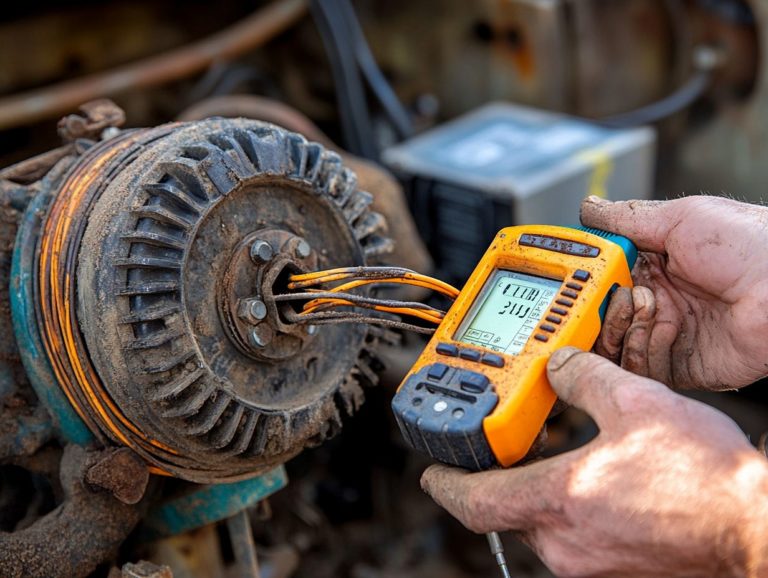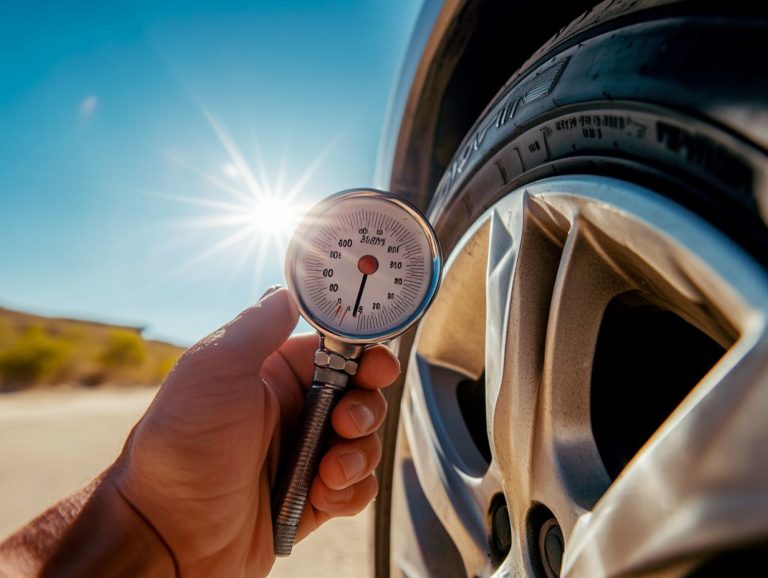Understanding Your Car’s Warning Lights
Your vehicle is equipped with several warning lights. Each one acts as a critical communication tool designed to help you address potential issues.
From the engine light to the airbag warning, understanding these indicators is vital. They help preserve your car s health and ensure your safety.
This guide explores common warning lights. It details the actions to take when they illuminate and highlights how regular maintenance can prevent these alerts from appearing in the first place.
Stay informed and keep your ride in top shape!
Contents
Key Takeaways:
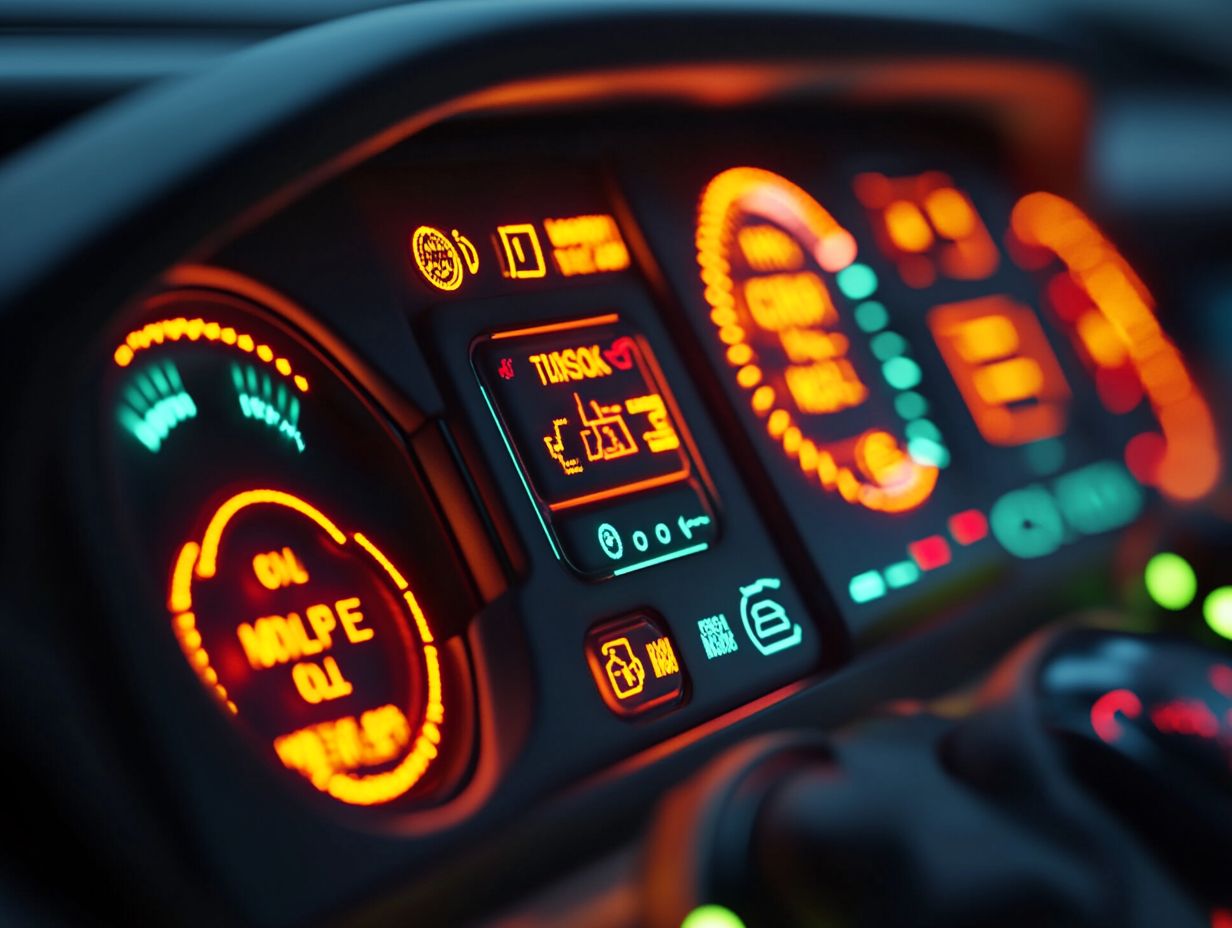
- Always pay attention to your car’s warning lights to avoid breakdowns or accidents.
- If a warning light comes on, take immediate action to address the issue.
- Regular maintenance and safe driving can help prevent warning lights from activating and ensure your car’s longevity.
Common Warning Lights and Their Indications
Understanding common warning lights in modern cars is essential for safety and performance. These dashboard indicators serve as alerts for potential issues that could affect the engine, braking system, and other critical components.
Each light corresponds to a specific system within your vehicle. They offer crucial information that helps prevent serious damage and ensures reliable operation.
Familiarize yourself with indicators like the engine light, battery light, and oil pressure light. This knowledge empowers you to take timely action, enhancing both your safety and efficiency on the road.
Engine Light
The engine light is a vital dashboard warning signal, indicating potential issues with your engine. When it lights up, it could mean something is wrong, affecting components like fuel delivery or ignition.
Common reasons for the engine light activation include a loose gas cap or faulty sensors. Act quickly to keep your vehicle in great shape check your owner’s manual or tighten the gas cap. If the light stays on, seek professional help.
Ignoring the engine light can lead to costly repairs later on. Addressing it promptly is crucial for your vehicle’s health.
Battery Light
The battery light is a critical indicator of your vehicle’s charging system. When it illuminates, it may signal problems with the battery or alternator.
Ignoring the battery light can lead to serious complications, such as being stranded with a dead vehicle. Recognize the urgency prompt action can help you avoid unexpected breakdowns.
Safe driving practices dictate that you address these warnings immediately. This helps safeguard both your personal safety and your vehicle s electrical system.
Oil Pressure Light
The oil pressure light on your dashboard is a crucial alert for potential oil supply issues. When it lights up, it indicates that the oil pressure in your engine has fallen below a safe level.
This drop can lead to inadequate lubrication, which increases wear on essential engine components. Factors like low oil levels or a malfunctioning pump can trigger this warning. Don t ignore it take action right away!
To protect your engine’s health, regularly check your oil level and schedule timely oil changes. Address any leaks or pump issues immediately. Doing so significantly reduces the risks associated with low oil pressure, preserving your engine s vitality.
Check your dashboard regularly and reach out for help if a warning light comes on.
Brake Light
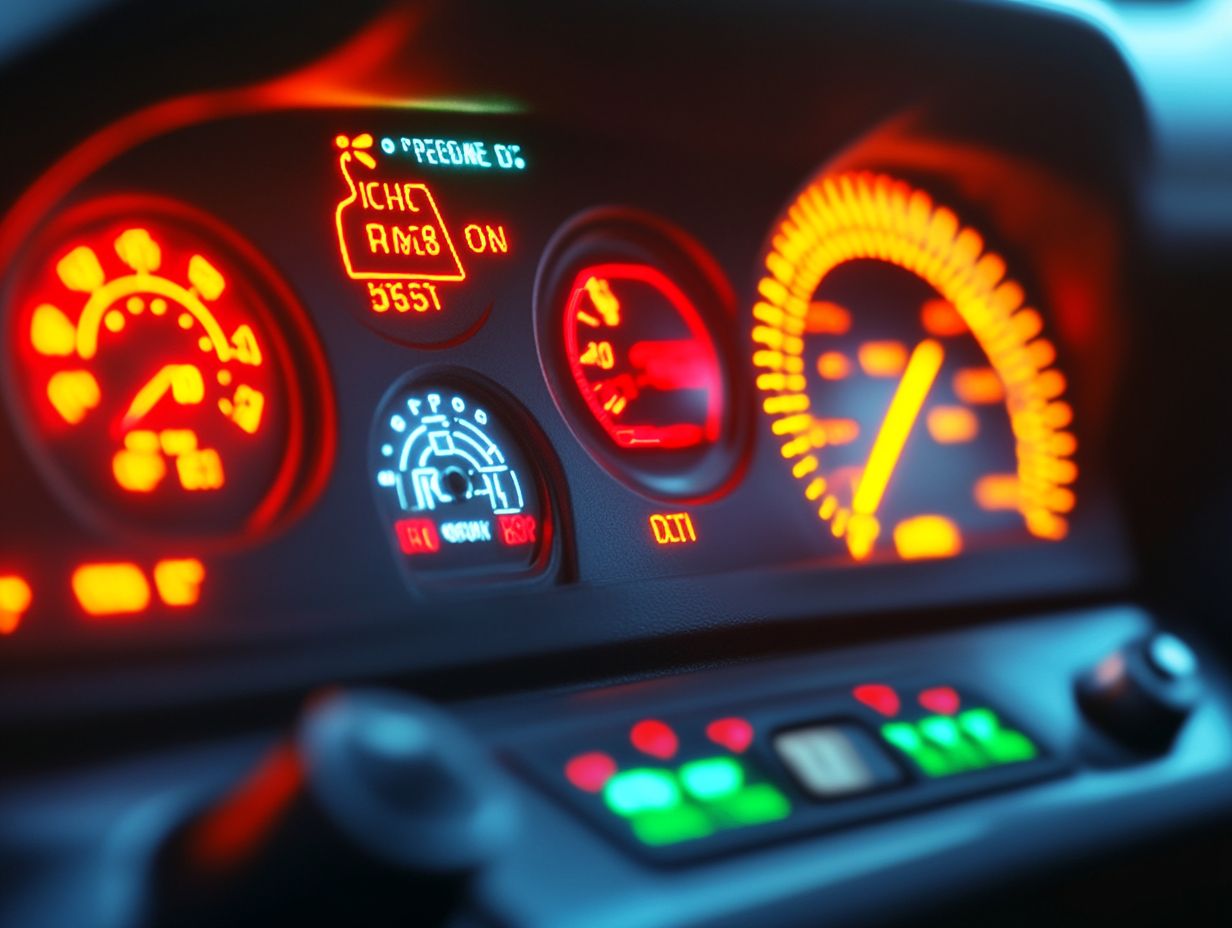
The brake light on your dashboard is an essential warning indicator that highlights potential issues within your brake system. This directly influences your vehicle’s safety. When this light comes on, it s not just a suggestion; it s a critical call to action demanding your immediate attention.
Common triggers for the brake light activation include:
- Low brake fluid levels
- Worn brake pads
- Faulty sensors
Respond without delay by checking the brake fluid and looking for leaks or unusual noises. Ignoring this warning could lead to significant braking problems, creating dangerous driving conditions. Recognizing and addressing this alert is crucial for safe driving.
Tire Pressure Light
The tire pressure light is your vehicle s way of giving you a nudge when tire pressure is low. This is essential for both handling and safety. Think of it as an early warning system that warns you about improperly inflated tires, which can lead to decreased traction, uneven tread wear, or worst case blowouts.
Factors that can trigger this alert include sudden temperature shifts, slow leaks from punctures, or even the impact of recent tire rotations. Make it a habit to check your tire pressure regularly using a reliable gauge. If that light comes on, take a moment to inspect your tires for any visible damage, and consult a professional if needed.
By maintaining optimal tire pressure, you enhance your safety on the road, boost your fuel efficiency, and extend the life of your tires.
Airbag Light
The airbag light on your dashboard is more than just a warning; it’s a vital indicator of potential problems with your airbag system. This system is essential for passenger safety.
When this light comes on, it indicates there could be a problem within the airbag system, which may jeopardize its effectiveness during an accident. Various factors, such as sensor malfunctions or wiring issues, can trigger this warning, all demanding your immediate attention. Ignoring this alert can have dire consequences; a non-functional airbag may fail to deploy in a crash, significantly increasing the risk of injury.
Acting immediately when the airbag light comes on is essential for ensuring safe vehicle operation and protecting everyone inside.
What to Do When a Warning Light Comes On
When a warning light illuminates, take action right away to keep your vehicle safe and running well. Ignoring these signals can lead to significant damage or even accidents, highlighting the importance of knowing how to respond properly.
Your first step is to assess the situation. If it s safe, pull over and consult your vehicle’s manual to understand the meaning behind the warning light. Depending on what it indicates, you may need to take further immediate actions or seek professional assistance to ensure everything runs smoothly.
Immediate Actions
Immediate actions after spotting a warning light are critical for maintaining your vehicle s safety and preventing further damage.
When you see that warning light flashing, staying calm yet alert is essential. Safely pull over to the side of the road to evaluate the situation. This helps minimize potential hazards and protects you and others from unnecessary risks.
Once parked, check your vehicle s fluid levels the amount of oil, coolant, and brake fluid because low levels might signal leaks or other mechanical issues.
Inspect for any obvious signs of trouble, like smoke or unusual noises. This can provide you with valuable insights before deciding to seek further assistance.
Next Steps
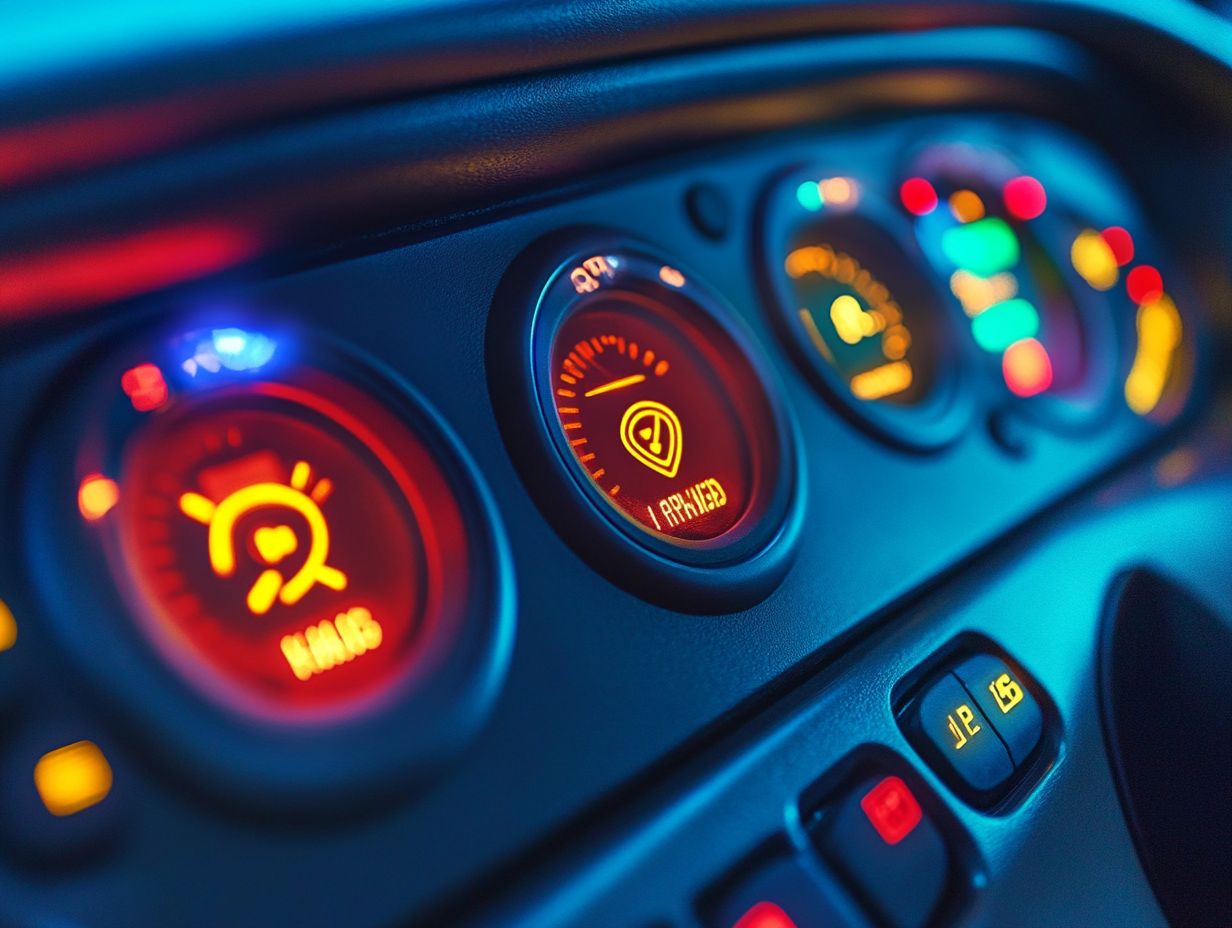
After you ve taken immediate action in response to a warning light, your next steps should involve assessing the vehicle’s condition. Consult a professional if necessary.
Understanding the nuances of these warning signals is crucial for maintaining the longevity and performance of your vehicle. A professional diagnosis ensures that any underlying issues are accurately identified before they escalate into larger, more costly problems.
For instance, when the check engine light comes on, it could mean anything from a loose gas cap to a serious engine malfunction. It s wise to document the warning light’s behavior and any accompanying symptoms before you visit a certified technician.
Technicians will typically utilize specialized tools to read your vehicle’s error codes and may suggest specific repairs based on their findings. Following this structured approach not only aids in effective repairs but also builds long-term trust in your vehicle maintenance journey.
How to Prevent Warning Lights from Coming On
Preventing warning lights from illuminating your dashboard is crucial for maintaining the reliability and safety of your vehicle. Regular maintenance and thorough inspections play a vital role in sidestepping potential issues that could trigger these alerts.
By ensuring your vehicle remains in peak condition, you significantly reduce the chances of dashboard notifications concerning critical systems like the engine, brake system, and tire pressure. Taking proactive measures not only shields you from unexpected breakdowns but also extends the lifespan of your vehicle.
Regular Maintenance and Inspections
Regular maintenance and inspections are essential for preventing pesky warning lights from lighting up your dashboard.
Engaging in these routine tasks like timely oil changes, comprehensive brake inspections, and consistent tire rotations not only boosts your vehicle’s performance but also keeps its various systems running smoothly.
- Timely oil changes to prevent engine wear.
- Comprehensive brake inspections for safety.
- Consistent tire rotations to maintain even tread wear.
By prioritizing these maintenance activities, you can enjoy a smoother driving experience and extend the lifespan of your vehicle.
Safe Driving Practices
By adopting safe driving practices, you’ll drastically cut the chances of pesky warning lights lighting up on your dashboard.
When you prioritize gradual speeding up and gentle braking, you not only enhance your own safety but also contribute to your vehicle s optimal performance. This thoughtful approach helps maintain consistent engine health and minimizes wear and tear on vital components like brakes and tires.
Regular maintenance checks, paired with responsible driving habits, allow you to catch potential issues early, saving you from costly repairs down the line. By steering clear of abrupt maneuvers and being mindful of speed limits, you can extend your vehicle’s lifespan while enjoying better fuel economy, ultimately leading to a more dependable and enjoyable driving experience.
Frequently Asked Questions
What are warning lights on a car?
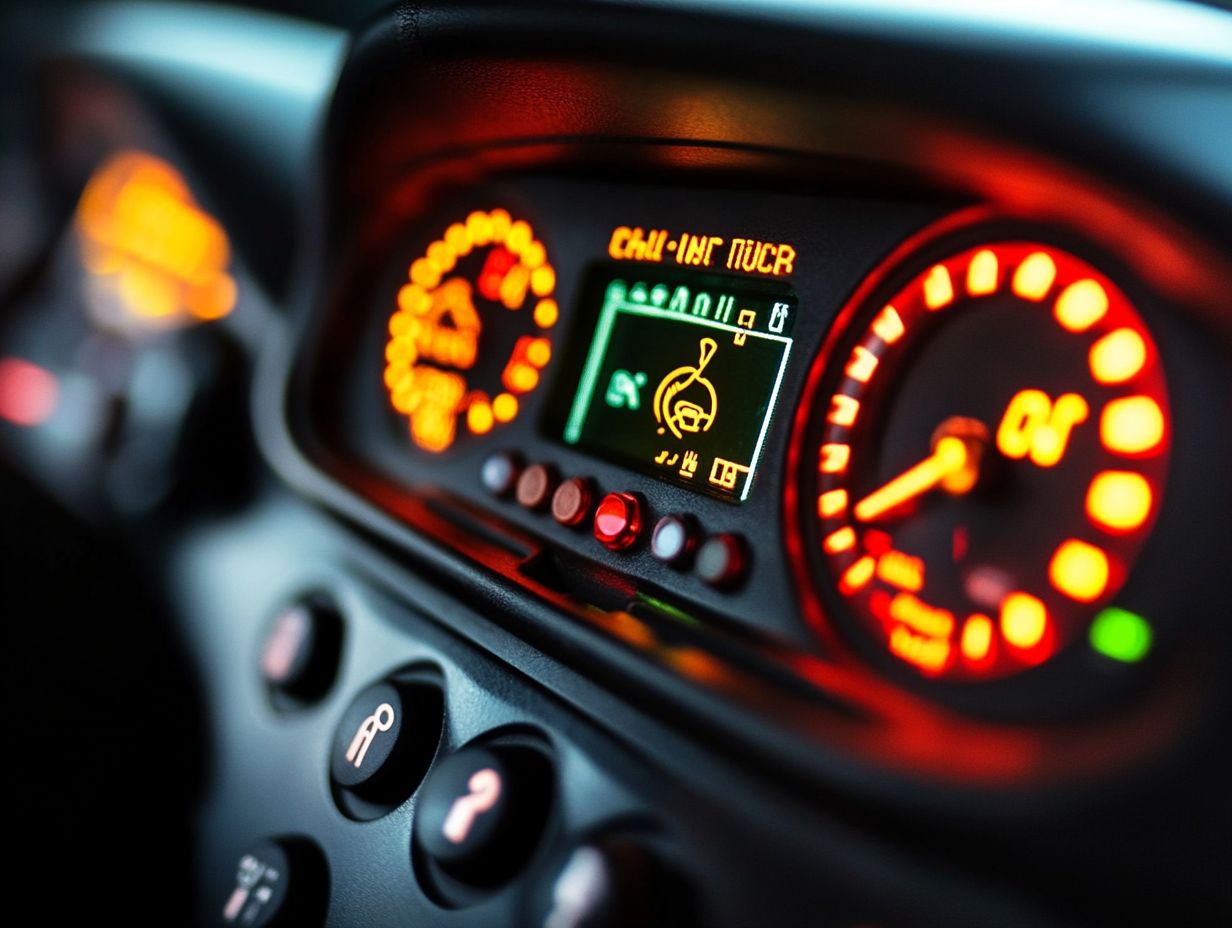
Warning lights on a car are indicators that alert the driver of potential issues or malfunctions with the vehicle. They can be in the form of symbols, words, or numbers displayed on the dashboard.
Why is it important to understand your car’s warning lights?
Understanding your car’s warning lights is crucial because it allows you to identify potential problems with your vehicle and take necessary actions to prevent further damage. It also helps you to know when to seek professional assistance.
Remember to check your vehicle’s dashboard frequently and consult a technician if you’re unsure about a warning light.
What do different car warning lights mean?
Car warning lights show various messages depending on the symbol. Common ones include the check engine light, battery light, oil pressure light, and tire pressure light.
Always look at your car’s manual for specific details on each warning light.
What should I do if a warning light appears on my dashboard?
Don’t ignore warning lights! Find a safe spot to pull over immediately.
Check your owner’s manual for guidance. You may need to act quickly or visit a mechanic.
Can warning lights turn off on their own?
Warning lights usually don t turn off by themselves. They alert you until the problem is fixed.
Some cars have a self-check feature that might reset certain lights after several successful starts.
What should I do if my car’s warning lights stay on?
If your warning lights remain on, it could mean a serious issue. It’s time to get a professional mechanic to inspect your vehicle!


